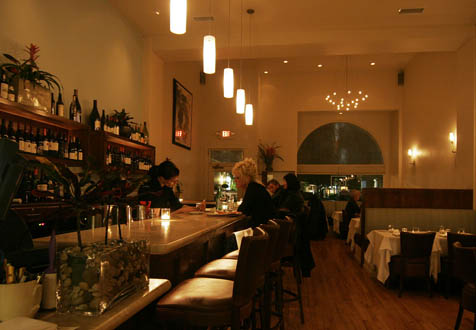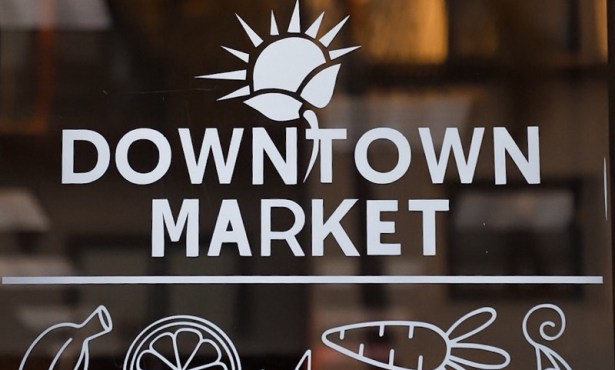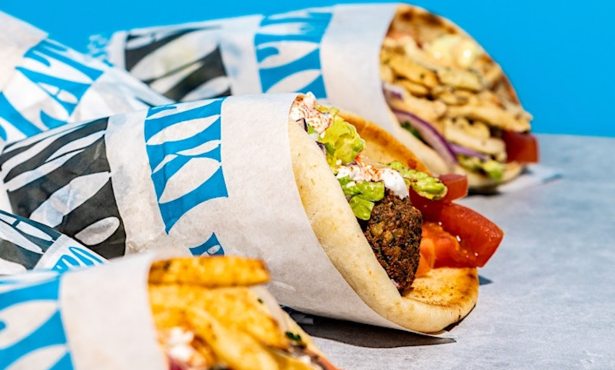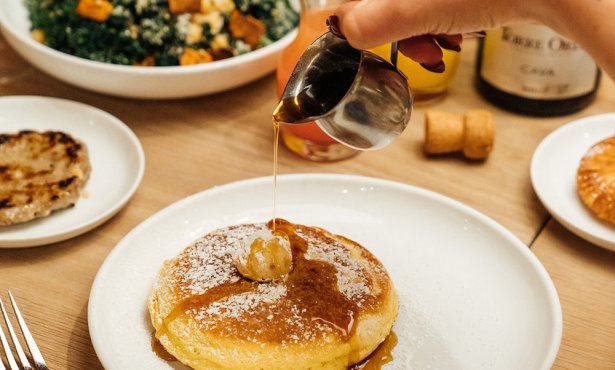On Drinking Yquem
A Wine Night of a Lifetime

I’ve bought splits before, but this was the first half of a bottle of wine I’d ever purchased. Priced at a pre-release $200 per bottle, and sure to increase in value, this was an acquisition I needed a friend to goad me into. Then again, when I picked it up after ordering it as a future on the Internet, the clerk who brought it out said, “Ah, liquid gold.” There I stood, a proud half-owner of a 1997 Ch•teau d’Yquem.
Just as there’s jazz and Louis Armstrong, there’s white wine and Yquem. Back in 1855 when Napoleon III wanted to rank the wines of Bordeaux, the land of Latour and Margaux and other monumental reds, the only wine designated grand premier cru was Yquem. It’s a Sauternes so it’s sweet, but to call it only sweet is to think Satchmo merely performed “Hello, Dolly!” We’re talking a wine of “Potato Head Blues” brilliance.
Of course I didn’t appreciate that until drinking some, for as any oenophile knows, scores and legend don’t mean anything until you taste. My anticipation was keen that evening; I worried I had badly stored my precious jewel, that we were drinking it way too soon (this wine has been enjoyed for a century), and that I wouldn’t get its mysteries. We had even postponed our first scheduled evening as some of us were under the weather-we wanted to relish our Yquem snootily, not snottily.
We did so at Square One, a perfect choice as it features foie gras, believed to be the ultimate food match for Yquem. Delighting in the engorged livers of geese and ducks isn’t PETA-approved, but the stuff is so mouth-wateringly delicious I tend to rationalize away the animal’s pain with an “if I’m eating flesh anyway, I’ve already made the cardinal sin.” Plus, foie gras is a luxury I enjoy rarely, unless I’m in France.
We let the wine air a bit, as it was a mere 11 years old. On the ch•teau’s Web site (yquem.fr) it reads, “Certain connoisseurs consider it outrageous to drink a young Yquem and believe that opening such a monumental wine before its 30th birthday is tantamount to sacrilege.” Luckily no Sauternes right-to-lifers stormed our table to disturb our happy scene under Square One’s Julian Schnabel painting, where we were so eager to taste that my co-bottle owner sipped before we toasted. The wine greeted us with a brilliant apricoty-oaky freshness, but seemed a bit subdued in its nose. But it had greater surprises. In the mouth, it’s one of those wines that you can feel re-order your tongue to taste it best, a richness that pleases by touch. It’s sweet, but like toned-down honey, and there’s a sneaky bit of warmth at the end-perhaps its youth or just its acids arguing for balance.
Yet the thing one remembers about Yquem is it refuses to let you forget. I have never had a wine hold its finish as long, as steadily. A killer cabernet, for instance, might end strong, but that finish is always a new taste-the tight tingle of tannins, say. But with Yquem, you relish the flavor a good 45 seconds after swallowing, and that flavor is all Yquem. If it truly gets better with age, it would ruin my taste for life, leaving me saddened and unfulfilled the rest of my drinking days.
That was not the case, however. The wine delighted, somewhat entranced. Each bottle should contain the words: “In case evening requires the wit of Noel Coward from all its guests, pop cork.” Its golden glow suffused our table, abetted by the trio of foie gras, expertly prepared. The searing gave the liver a light caramelization, a bit of sweet snap, set in relief in two registers by some apple and pomegranate. The liver mousse, whipped almost to air, still packed a full punch and came with a parmesan crisp that tethered it to Earth. The torchon melted in the mouth, releasing foie-ness in creamy waves. All of it multiplied the Yquem’s joys, equally able to hold its profile long after one’s mouth was empty. This was a meal to be savored, sip by sip, forkful by forkful.
Of course, four people drinking one bottle of wine doesn’t last long. All food and wine enjoyment is like living a life in hours-you’d better live it to the fullest. This epicurean poignancy is nowhere richer than with Yquem, a wine made possible by Botrytis cinerea, or, as it’s called, “noble rot.” That is, to make a good wine, the grapes go bad. They do so at different rates each fall, so at times, they get harvested grape by grape. Each vine of mainly semillon and sauvignon blanc produces only one glass of wine.
Yquem in all its deliciousness is a bitter teacher, reminding us how dependable on rot we all are, how lovely life is, how quickly even the best of us is devoured.



